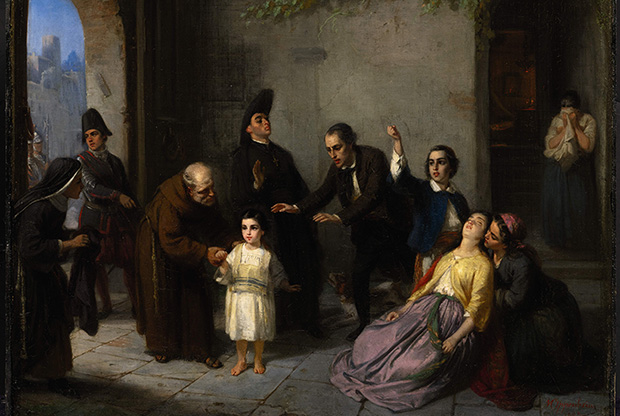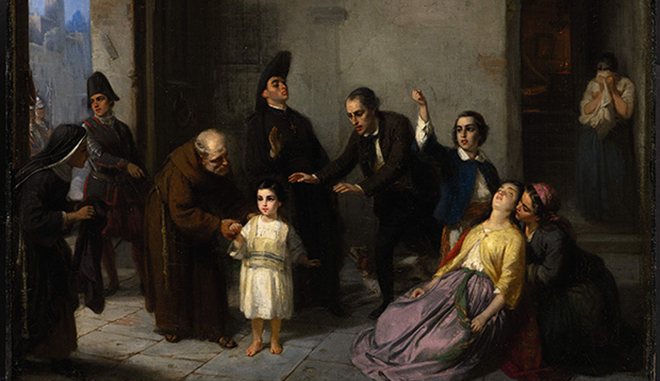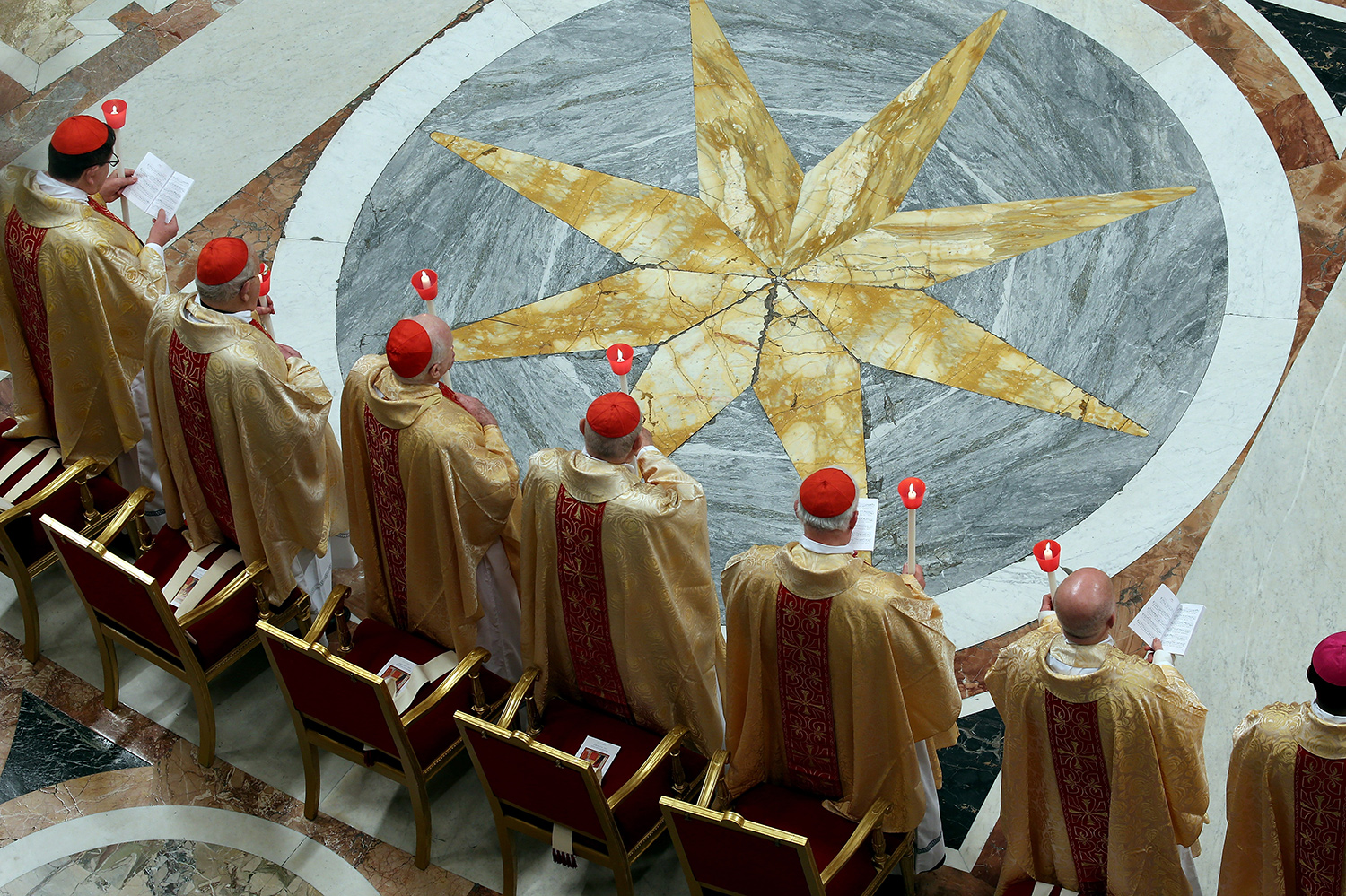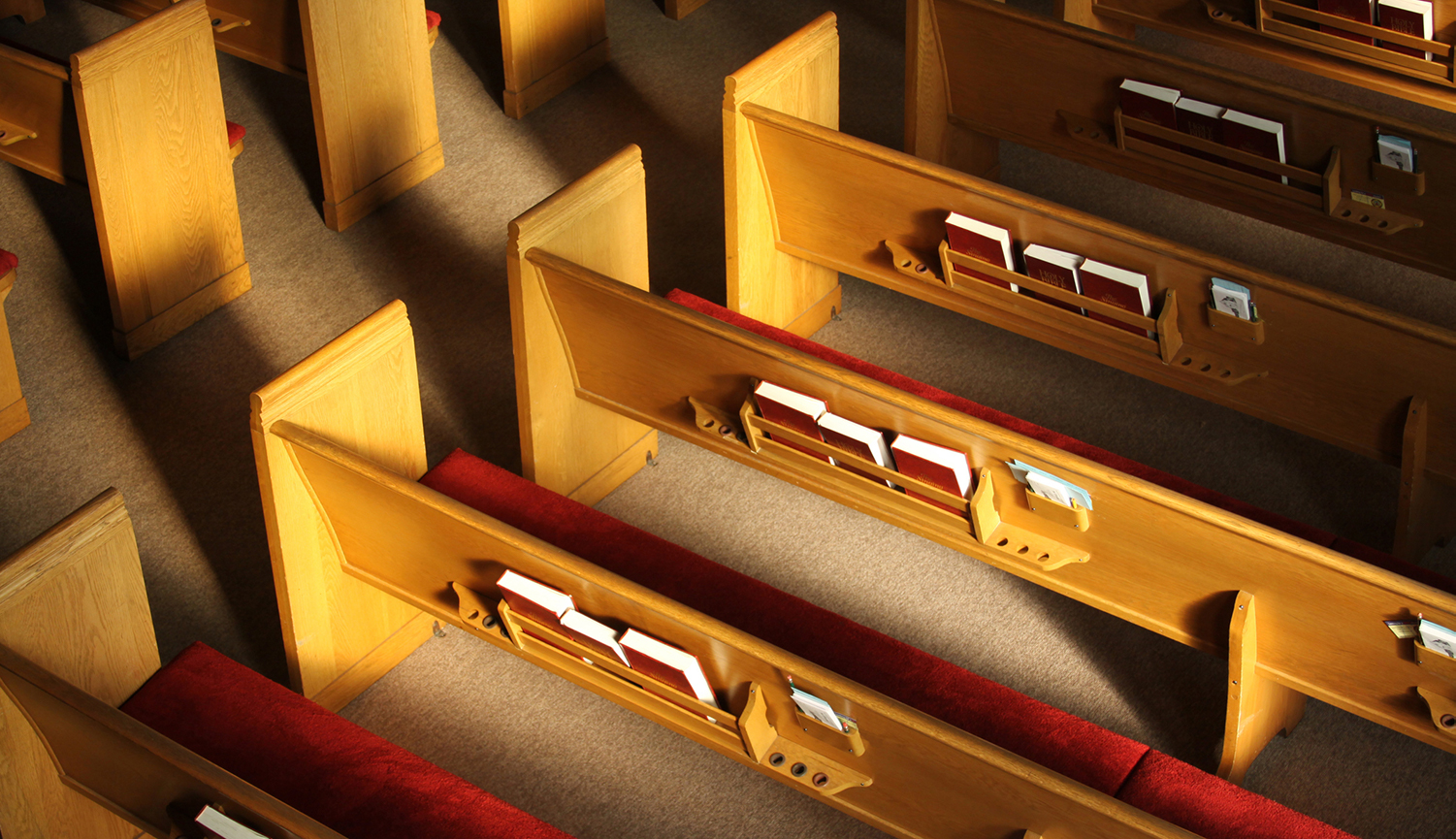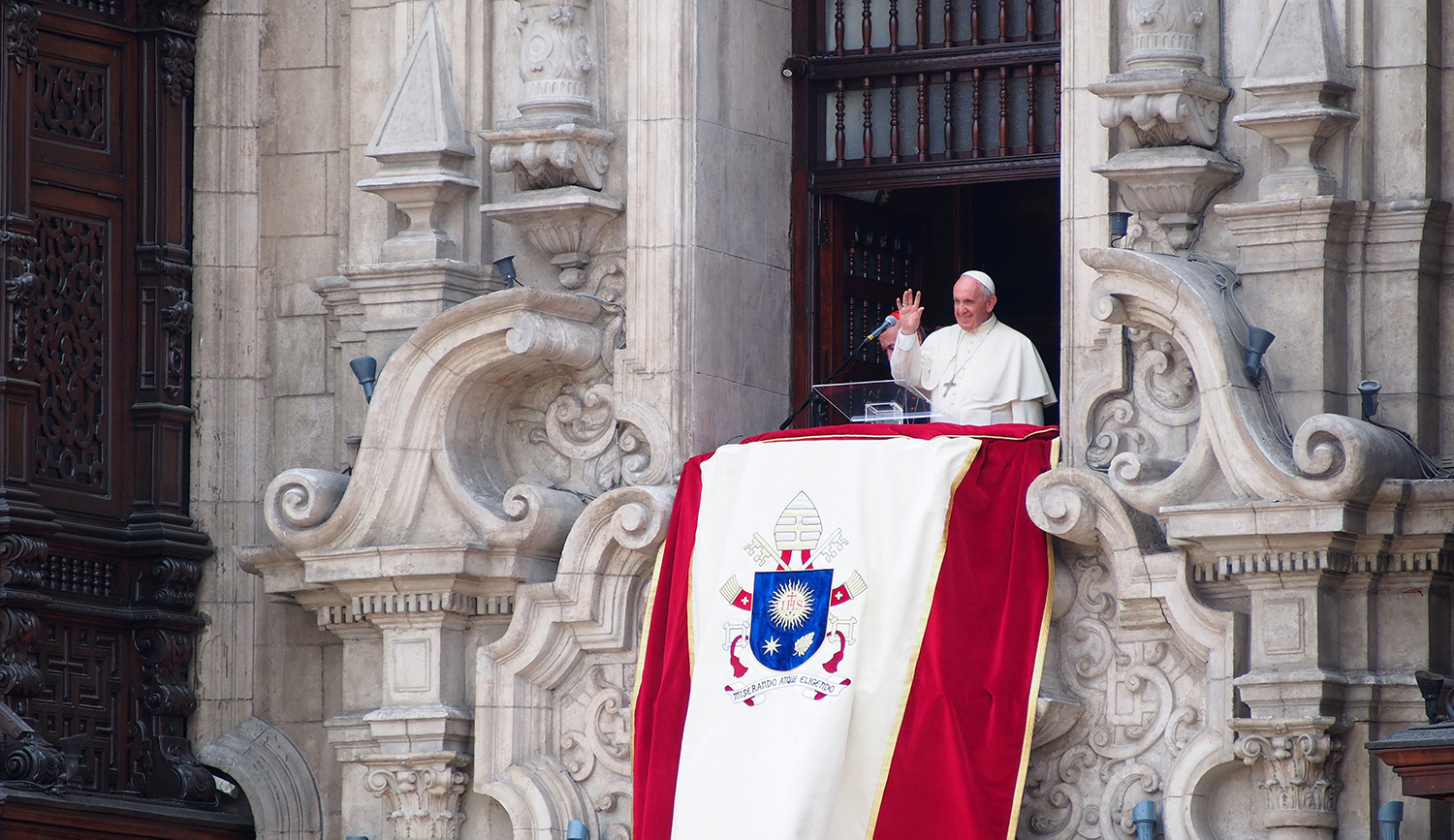I am grateful to Jon D. Levenson and R.J. Snell for their responses to my essay in Mosaic on the continuing reverberations of the 1858 Mortara case and the heated debate aroused by its recent treatment in the journal First Things. Jon Levenson has, with characteristic brilliance, explored the implications of these debates for the relations of contemporary Jews and Catholics both to each other and to modern liberalism. R.J. Snell has pushed me to refine my account of the Second Vatican Council (Vatican II), and provided a valuable overview of the Church’s current teaching on religious liberty.
Here I mean to focus on two subjects with which both of my respondents deal: the question of continuity and change in religious traditions, and the tension between negative and positive conceptions of liberty (commonly distinguished in shorthand as freedom from and freedom to).
Levenson, citing changes in Church teachings inaugurated by Vatican II, observes that, on the specific subject of the Jews,
the Roman Catholic Church has dramatically reversed itself over the past half-century or so, not only narrowing markedly the scope of the supersessionist theology that underlay the old anti-Judaism and the violence against the Jews that, willy-nilly, it encouraged, but also speaking positively about the Torah, the chosenness of Israel, and even about the ongoing Jewish messianic expectation[.]
Similarly, Snell demonstrates that the Church has also dramatically changed course on the subject of religious liberty.
One important question, for Jews and Catholics alike, is thus how we make sense of the post-Vatican II dispensation in light of what came before. Snell argues that in my essay I erred in “accepting the anti-liberal characterization of Vatican II’s ‘primary objective’ as bringing the Church up to date with modernity.” To the contrary, he says, “Vatican II’s teachings . . . sought not to be more modern, but to be more faithful.”
What I wrote, however, was that the aim of Vatican II was a dialogue with modernity. This is a rather different claim, and one that fairly describes the intentions of the pope who summoned the Council into being. In Humanae Salutis, the formal document convoking Vatican II, John XXIII wrote:
Today the Church is witnessing a crisis under way within society. While humanity is at the threshold of a new age, immensely serious and broad tasks await the Church, as in the most tragic periods of her history. It is a question of bringing the perennial life-giving energies of the Gospel to the modern world[.]
This understanding of Vatican II’s mission is also reflected in the Council’s own documents. According to Gaudium et Spes, its Pastoral Constitution on the Church in the Modern World, it is the Church’s duty to “scrutiniz[e] the signs of the times . . . interpreting them in the light of the Gospel” and responding to humanity’s “perennial questions” in “language intelligible to each generation.” In other words, the task of evangelizing moderns requires the Church to translate its message into modernity’s native tongue.
When, however, we translate a message into a new language, the interaction is reciprocal: the language cannot help influencing the message. In this light, what I called Vatican II’s “fatal vagueness” was not a consequence of the task being carried out badly; it was in the nature of the task itself. By seeking to address the woes of history, the Church necessarily exposed itself to the possibility of historical change, and thus to disagreements over the nature of that change.
Snell sees such disagreements as immaterial. For him, as for many Catholics, Vatican II effected the transition only positively, refining the Church’s message and making it newly accessible while disturbing nothing essential in that message. He writes that “the Church understands the Council’s primary objective as achieving ‘a growth in the understanding of the realities and the words which have been handed down,’ or what Catholics term the development of doctrine.” This is what he means by stipulating that “Vatican II’s teachings . . . sought not to be more modern, but to be more faithful.”
These assertions conjure up an image I’m not sure Snell quite intends: of the Church floating serenely above the vicissitudes of history, working out the ineluctable logic of its own internal problems unmarked by the turmoil below. Yet nothing could be farther from John XXIII’s frank engagement with “immensely serious and broad tasks await[ing] the Church, as in the most tragic periods of her history.” The dangers posed by an ahistorical image of the Council are aptly laid out by Levenson:
To many Catholic conservatives, it is more convenient either to ignore the existence of the new reality or to see the documents authorizing it as nothing more than restatements of the old teaching in a new situation or as a smooth, organic development out of the older position.
In particular, the temptation to see the Church’s modern position on the Jews as a “smooth, organic development out of the older position” lies partly behind the “blind spot” toward Christian anti-Judaism that Levenson discerns in First Things and in its founder, Richard John Neuhaus. Neuhaus demonstrated this blind spot when he wrote:
[T]he teaching [about the Jews] of the Second Vatican Council in Nostra Aetate is hardly a public-relations fix under the pressure of post-Holocaust guilt. It is, rather, a profound reflection on how, as the Church more deeply explores her nature, she discovers the inextricable link with the people of Israel.
Observe the false dichotomy: a caricatured notion of Nostra Aetate as a “public-relations fix” is used by Neuhaus to discredit the idea that the new teaching was somehow shaped by history, thus making his claim—that it was instead an organic product of the Church’s own ineluctable self-reflection, untouched by recent unpleasant events in Europe—seem more plausible. The consequence of “such unrealistic attitudes,” as Levenson writes gently, is to “keep the door open to the old thinking, now renounced.”
To their credit, Neuhaus’s successors at First Things have published one of the bluntest counter-statements to his unrealistic view—one that may be oversimplified but that at least acknowledges the Church’s responsiveness to history. In a 2015 essay, Rabbi Jonathan Sacks put it very simply: “[i]t took the Holocaust to bring about Nostra Aetate.” This is one reason, I think, that what Levenson calls the “convenient illusion that Judaism and Christianity speak with one voice” is now being tested. Their current rapprochement was made possible partly by the impact of a singular historical event. As the memory of that event fades, their differences may once again be coming to the fore.
Given that the Church does change in response to history, how are we to make sense of its changes? This question is especially fraught on the subject of liberty and its relation to tradition. Behind both Snell’s and Levenson’s responses lies the question that confronts many religious people today: should we affirm the modern liberal order, or reject it?
Both of my respondents agree that the extremes—outright embrace, total repudiation—are to be avoided. But otherwise they differ. For Levenson, “dangers come from both of these directions”; for Snell, Catholics can “be grateful to liberalism without granting it authoritative status.” Presented with a choice between liberal individualism and an unequivocal religious communitarianism, Levenson’s optimal response might be characterized as “neither/nor,” Snell’s as “both/and.” As I’ll try to explain, I lean toward the former.
The great Polish philosopher Leszek Kołakowski once remarked that the Church’s post-Vatican II theological dispensation has partially sidelined the Augustinian “positive” account of liberty—that is, liberty as freedom to, and therefore inextricable from the good—in favor of a “negative” account more compatible with the liberal understanding of freedom from constraint. There are, however, limits to how far it can be sidelined, and these limits are intrinsic to what Catholics take the Church to be. If it is, as Snell writes, a “living and dynamic” tradition, it can neither evolve as smoothly nor accommodate itself to the liberal order as easily as his account suggests.
The strain involved in finding a modus vivendi between Church and liberalism is already evident in Snell’s characterization of the respective positions. His gloss of Pope John Paul II’s encyclical Veritatis Splendor makes that document seem like an unqualified endorsement of individual autonomy: “‘God willed to leave man in the power of his own counsel,’ with individuals ‘free and self-governed, swayed autonomously by [their] own will.’” Yet these passages in the original contain no reference to the individual. And they are immediately followed by a description of liberty that is strongly Augustinian: “As Cardinal John Henry Newman, that outstanding defender of the rights of conscience, forcefully put it,” John Paul writes, “‘Conscience has rights because it has duties.’” The encyclical then condemns
[t]endencies in contemporary moral theology, under the influence of the currents of subjectivism and individualism . . . [that] involve novel interpretations of the relationship of freedom to the moral law . . . lessening or even denying the dependence of freedom on truth.
The idea that “[c]onscience has rights because it has duties” could perhaps be construed in liberal, universalist terms. But that is harder to do with “the dependence of freedom on truth,” particularly when we consider that for Catholics truth is not just an abstract principle but a person: “I am the way, and the truth, and the life.” Thus, even this encyclical of John Paul II, whose pontificate may have marked the high tide of the rapprochement between the Church and the liberal order, is anything but an unqualified endorsement of negative liberty. Rather, in it, positive and negative conceptions of liberty coexist uneasily.
None of this negates the Church’s laudable renunciation of religious coercion. But it does suggest that the teachings of the post-Vatican II magisterium cannot definitively resolve conflicts over liberalism within the Church because the teachings themselves embody those conflicts. What Snell calls “the voice of the Catholic Church” is not one voice, but many.
To see why this must be so, consider what it means for the Church to be a “living and dynamic” tradition. The concept of the “development of doctrine,” to which Snell appeals, was a product of the growing realization that the old standard of orthodoxy defined by St. Vincent of Lérins—“that which has been believed everywhere, always, and by all”—was no longer tenable in the light of modern historical research. According to this model, heresy always means innovation. But as Newman (a Catholic convert from Anglicanism) realized, such a definition is ahistorical: some heretical doctrines were at least as old, and may have at one time been as commonly held, as those later deemed orthodox. It was partly in response to this quandary that Newman and others formulated the idea of the development of doctrine. The Church, they held, refined over time its understanding of the truths with which it had been entrusted by revelation. If error could stem from unwarranted innovation, it could also stem from failing to recognize the logic of doctrine’s development.
Has, then, the development of doctrine consigned anti-liberalism to the dustbin of history? After all, Vatican II condemned religious coercion, and John Paul II ringingly affirmed the rights of the individual. But the development of doctrine cannot simply mean the authority of the present over the past, because a tradition relies for its legitimacy upon continuity with that past, which it cannot forsake without undermining its own authority. It must therefore continuously balance the past’s claims against those of the present. But the consequence of this balancing act, as the Church historian Jaroslav Pelikan drily remarks, is “unremitting controversy about the correct direction, proper rate, and apposite formulation of the development of doctrine[.]”
The philosopher Alasdair MacIntyre has argued that such “unremitting controversy” is a feature not just of the Christian tradition but of working traditions as such:
[Conservative political theorists] have followed [Edmund] Burke in contrasting . . . the stability of tradition with conflict. [But] when a tradition is in good order it is always partially constituted by an argument about the goods the pursuit of which gives to that tradition its particular point and purpose. . . Traditions, when vital, embody continuities of conflict.
This insight cuts both ways. On the one hand, it makes short work of the claim recently raised in justification of Romanus Cessario’s article in First Things defending the Church’s seizure of the Jewish boy Edgardo Mortara—namely, that “the Church has always formally taught her authority to coerce in the practice of religion.” On the other, sadder hand, it militates against any attempt to resolve the current conflicts over liberalism by appealing to the dynamism of tradition. It may be the case that the Church’s teachings now “do not lead to anti-liberalism,” let alone illiberality, and that its supersessionist claims against Judaism have been dramatically narrowed. But in the past, things looked very different, and it is in the nature of traditions that the past is always with us. This is why Cessario can sincerely believe what he wrote in his unrepentant response to a Jewish interlocutor horrified by his article: “[you] make arguments consonant with [your tradition]. Catholic theology proposes a different view.”
Such claims remain possible because the illiberal and supersessionist strands within the Church’s tradition exemplified by the Mortara case have not really been repudiated (as I wrote in my essay) so much as politely shunted aside. As Cessario reminds his Jewish interlocutor, Pius IX has been not anathematized but beatified. Thus the door is kept open to what Levenson calls “the old thinking, now renounced.”
Is there any resolution to this dilemma? I am not sure. The debate over liberalism itself threatens to carry us further and further from any sound alternative, instead tempting its participants to define each other as ideal types—as if one could wholeheartedly accept, or wholeheartedly reject, either communal tradition or liberal modernity. In reality, most people in liberal societies are “cross-pressured,” as the philosopher Charles Taylor puts it, torn perennially between the two. Even those Westerners who repudiate liberalism tend to “see with liberal eyes and hear with liberal ears” (in the words of Elizabeth Bruenig), while the irreligious and the post-religious cast about anxiously for the constraints and certitudes of community. The fault lines within the Church and Judaism run also through each of us.
Nowhere are these fault lines more evident than when it comes to the question of liberty. Believing Jews and Catholics cannot simply dispense with a positive account of liberty, of freedom to, not only because it is too deeply embedded in their traditions to be easily excised but because it is arguably a logical consequence of the idea, which both affirm, that “God is one.” Yet such an account provides no stable common ground on which to meet, because the form it takes in each tradition is inevitably particular. (Levenson quotes a talmudic sage: “only one who is involved in Torah study is free.”) This suggests that some account of negative liberty is also necessary, not just to protect individuals from their communities but—as the Mortara case illustrates—to safeguard the autonomy of those communities themselves.
Yet negative liberty, which, again, is concerned with what we are free from, can provide no guidance as to how we are to make use of that freedom. It cannot give meaning to our lives, and efforts to make it do so mainly amount to experiments in filling an absence with another absence. That sense of meaning arises only from within traditions, and from bonds that (in Levenson’s words) are “more given and less chosen”—the very bonds that the concept of negative liberty tends to dissolve. It is from those same traditions and bonds, as Levenson suggests, that a liberal order draws the norms and habits that it needs to survive.
That is why I think that, for the foreseeable future, we will remain unsteadily suspended between the irreconcilable claims of tradition and modernity, the competing demands of fidelity to the past and accommodation with the present. Indeed, this constant balancing act may be the only way for any tradition to proceed. But it can breed its own temptations. Those temptations are inescapable, yet acting on them can do great injury, not only to others but to the tradition itself. The present debate is a vivid reminder of such dangers, from which we will probably never be immune, and of which we must therefore be ceaselessly mindful.
More about: History & Ideas, Jewish-Catholic relations, Liberalism, Mortara
